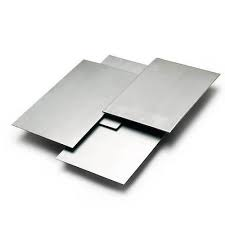Exploring the Different types of Hastelloy C276 and their applications
As an engineer or industry professional, you may be familiar with the various types of alloys available for use in extreme environments. One of the most popular choices is Hastelloy C276, a nickel-molybdenum-chromium alloy known for its resistance to corrosion and high-temperature environments.
 |
| Hastelloy C276 | Image Source : wikipedia.org |
In this article, we’ll explore the different types of Hastelloy C276 and their respective applications!
Hastelloy C276 Alloys
Hastelloys C276 is a wrought alloy composed of nickel, chromium, and molybdenum, which is recognized as the most versatile alloy in terms of corrosion resistance. This alloy exhibits outstanding resistance to the development of grain boundary precipitates in the weld heat-affected region, allowing it to be used in most chemical processing applications in an as-welded condition. Moreover, Alloy C-276 displays superior resistance to pitting, stress-corrosion cracking, and oxidizing atmospheres even at extremely high temperatures of up to 1900°F. Furthermore, Alloy C-276 is highly resistant to a broad spectrum of chemical environments, making it a highly reliable choice for various industrial settings.
Hastelloys C276 Properties
This alloy, Hastelloys C276, exhibits outstanding resistance to corrosion in reducing environments.
It also displays exceptional resistance to potent oxidizing salts like ferric and cupric chlorides.
The alloy's high nickel and molybdenum contents provide excellent corrosion resistance in reducing environments, and its low carbon content helps minimize grain-boundary carbide precipitation during welding. This ensures the material retains its corrosion resistance in the heat-affected regions of welded joints.
Additionally, Hastelloys C276 is highly resistant to localized corrosion such as pitting and stress-corrosion cracking. Remarkably, this alloy is one of the few materials that can withstand the corrosive effects of wet chlorine gas, hypochlorite, and chlorine dioxide.
Different Types of Hastelloy C276 Alloys
Hastelloy C276 comes in different forms, each with unique characteristics and applications. Here are some of the most common types of Hastelloy C276:
Sheets and Plates:
Hastelloy C276 sheets and plates are flat pieces of metal that are often used for construction, manufacturing, and fabrication applications. They are typically made of nickel, molybdenum, and chromium, which make them highly resistant to corrosion and wear. Hastelloy C276 sheets and plates are commonly used in chemical processing, pulp and paper production, and pollution control applications.
Strips:
Hastelloy C276 strips are narrow pieces of metal that are used for a variety of applications, including welding, brazing, and stamping. They are made from a combination of nickel, molybdenum, and chromium, which gives them excellent resistance to corrosion and high temperatures. Hastelloy C276 strips are commonly used in chemical processing, aerospace, and marine applications.
Rod, Bar, Forging:
Hastelloy C276 rods, bars, and forgings are typically used for manufacturing components that require high strength and resistance to corrosion. They are made from a combination of nickel, molybdenum, and chromium, which gives them excellent resistance to a wide range of corrosive environments. Hastelloy C276 rods, bars, and forgings are commonly used in chemical processing, oil and gas production, and power generation applications.
Wire:
Hastelloy C276 wire is a thin, flexible piece of metal that is commonly used in electrical and electronic applications. It is made from a combination of nickel, molybdenum, and chromium, which gives it excellent resistance to corrosion and high temperatures. Hastelloy C276 wire is commonly used in chemical processing, aerospace, and marine applications.
Overall, the different types of Hastelloy C276 alloys offer unique properties and advantages for various industrial applications. At MV Super Alloys, we offer a wide range of Hastelloy C276 products, including sheets, plates, strips, rods, bars, forgings, and wires.
Chemical Composition of Hastelloy C276 Alloys
Mechanical Properties of Hastelloy C-276 Alloys
Hastelloy C276 Specification & Standards in which (UNS N10276/W.Nr.2.4819)
Hastelloy C276 Applications
Here are some of the industries that uses Hastelloy C276 Alloy including;
Digesters and bleach plants in the paper industry.
Components exposed to sour gas.
Equipment for flue-gas desulfurization plants.
Evaporators, heat exchangers, filters and mixers used in sulfuric acid environments.
Sulfuric acid reactors.
Organic chloride process equipment.
Equipment for processes utilizing halide or acid catalysts.
Some typical applications of Hastelloy C276 include equipment components in chemical and petrochemical organic chloride processes and processes utilizing halide or acid catalysts. Other industry applications are pulp and paper (digesters and bleach areas), scrubbers and ducting for flue gas desulfurization, pharmaceutical and food processing equipment.
Final Words!..
Choosing the right type of Hastelloy C276 for your specific application is crucial for maximum efficiency and cost-effectiveness. At MV Super Alloys, we offer a wide range of Hastelloy C276 alloys to suit various industrial applications. Contact us today to learn more about our products and services, and how we can help you choose the right type of Hastelloy C276 for your needs.

Comments
Post a Comment